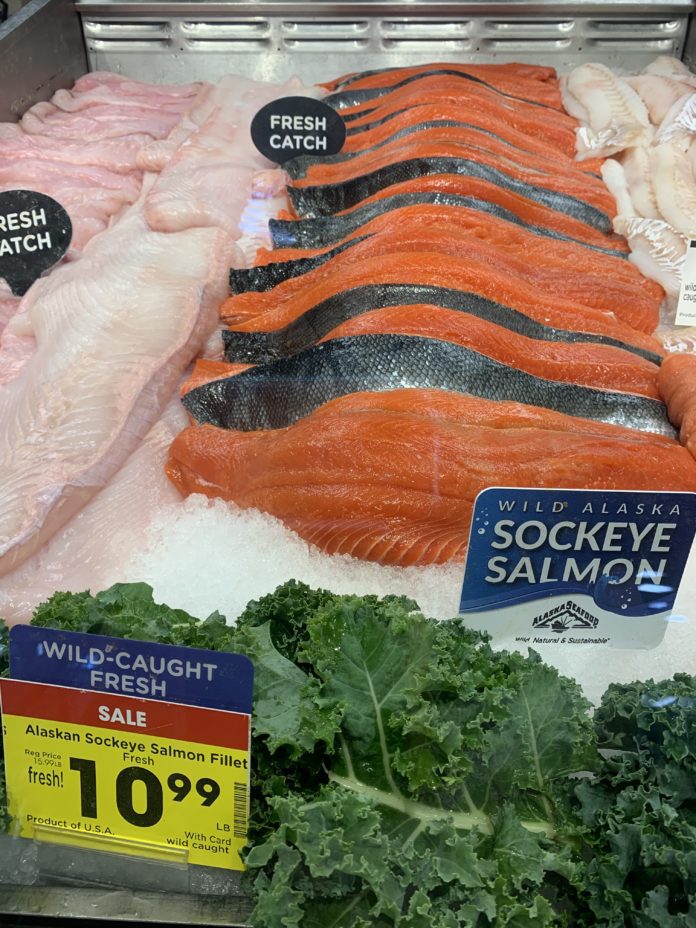
A robust 2023 catch exceeding 219 million Alaska salmon is bringing few smiles to the face of commercial fishermen faced with a global market glut of salmon and seeing their pay from processors drop, in some cases, to 50 cents a pound.
Adding to the complexity of the search for solutions is the reality that salmon is part of a larger matrix of wild Alaska seafood that seems to be hitting the market with a thud this season, according to a new report from Ocean Strategies, a public affairs firm specializing in seafood, fisheries and marine resources.
The new fisheries policy report, released on Sept. 8, includes policy and industry updates for those who rely on access to sustainable domestic seafood.
As word spread that Bristol Bay harvesters would be getting just 50 cents a pound at the docks, compared to a dollar a pound or higher last year, frustration rippled through the fleet and spilled over into boatyards as the season ended early for many crews the report said.
While renowned as the world’s biggest run of wild sockeye salmon, many Bristol Bay skippers in need of crew have hired greenhorns from Alaska and the Lower 48, crew hoping for a good experience and good pay for their efforts over a fast-moving fishery that for many is over in four to six weeks. The payout is what makes a harsh season worth the risk for many.
Fishermen as well as processors were overwhelmed by the 2022 urge of millions of sockeyes returning to the Bay at the same time. There was talk that because of that surge that of some less than careful care of the fish during the harvest, as well as processing, all of which might have lessened eye appeal of these fish in retail markets.
Ocean Strategies noted that the Alaska Seafood Marketing Institute is working to develop long term new markets worldwide, while salmon fishermen are looking for more immediate answers, to prevent widespread boat and permit sales.
Domestic seafood leaders and politicians nationwide have been angling for more industry support from the U.S. Department of Agriculture (USDA), which purchased 3.7 million pounds of wild Alaska sockeye salmon fillets and cans of salmon this summer, spending $60 million from its Section 32 program, the Ocean Strategies report notes. Section 32 pays for direct federal purchases of commodities, including seafood, that are not covered by mandatory farm programs through USDA’s Commodity Credit Corp.
New provisions of the Agriculture Improvement Act, also known as the Farm Bill, are up for a five-year reauthorization on Sept 30.
Sen. Lisa Murkowski, R-Alaska introduced the Improving ARCTIC Act, to extend USDA’s farming and ranching program eligibility to commercial fishermen. It would also open Farm Credit opportunities to the fishing industry and prohibit any federal agency from regulating offshore finfish farming, an activity not allowed in Alaska under the state’s constitution. The bill would also establish a Wild USA Seafood label for fish harvested in domestic waters and add labeling requirements for genetically modified or lab-cultivated fish.
Another bill by Sen. Dan Sullivan, R-Alaska, would establish an Office of Seafood Policy and Program Integration to help coordinate seafood policies and activities throughout the USDA, and expand USDA loan programs to commercial fishermen.













